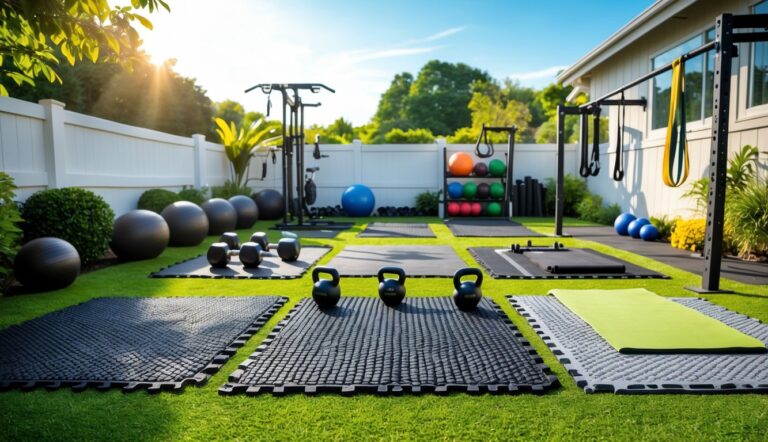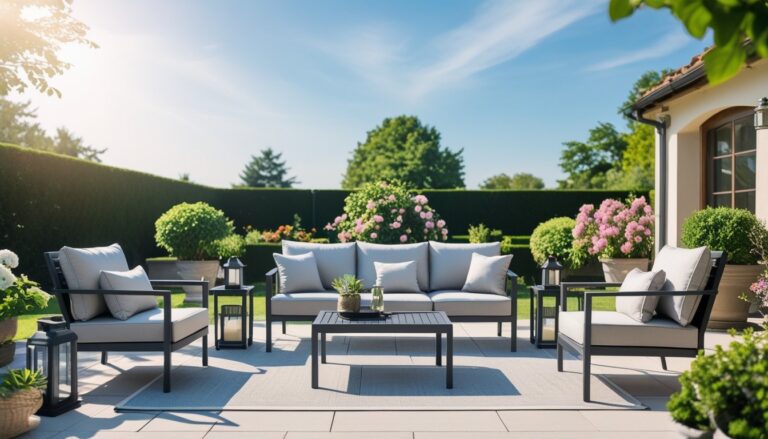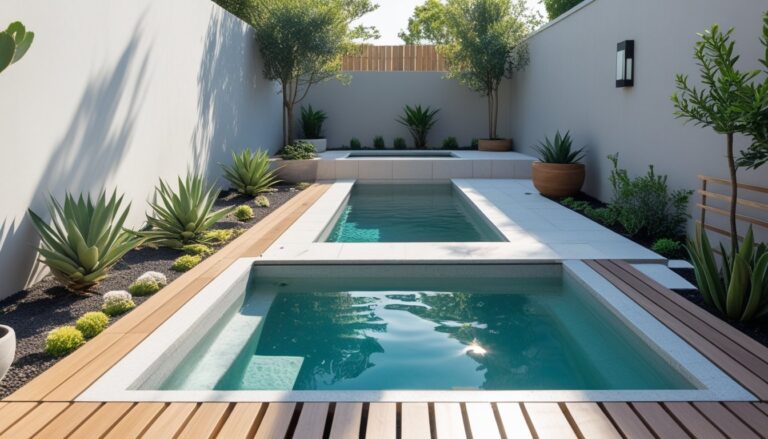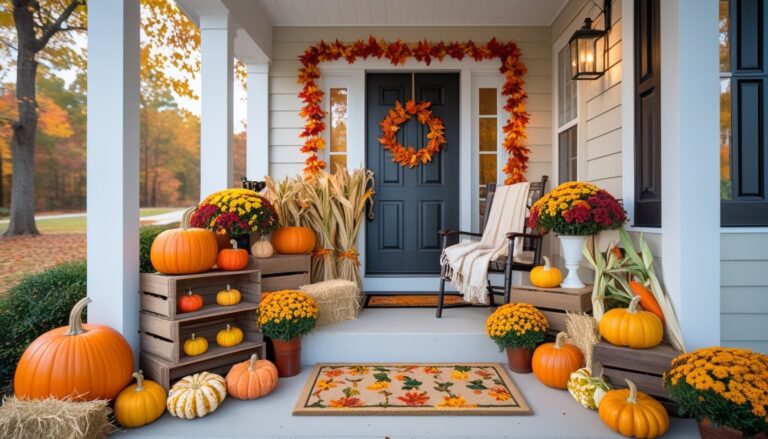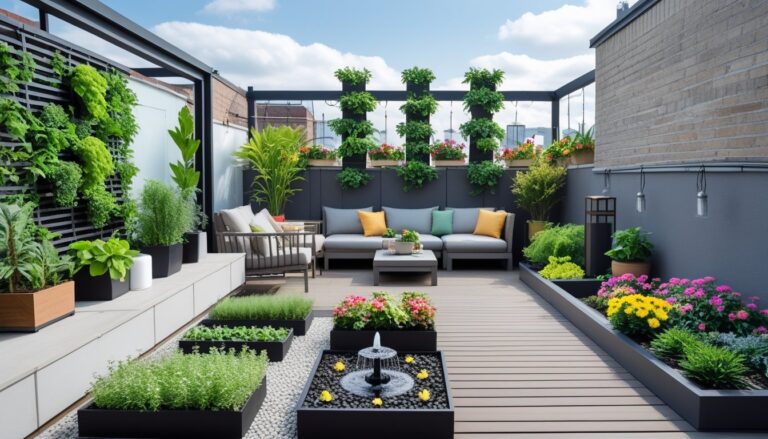9 Backyard Landscaping Ideas for a Stylish and Functional Outdoor Space
Backyard landscaping can greatly improve the look and feel of any outdoor space. It offers a chance to create a relaxing environment, add value to a home, and make the yard more functional. Many people want to refresh their yards but don’t know where to start.

Landscaping ideas provide practical ways to enhance outdoor spaces based on different needs and budgets. These ideas range from simple changes to more involved projects, helping people make the most of their backyard area. They also work for various yard sizes and conditions.
1) Floating decks with integrated soft lighting
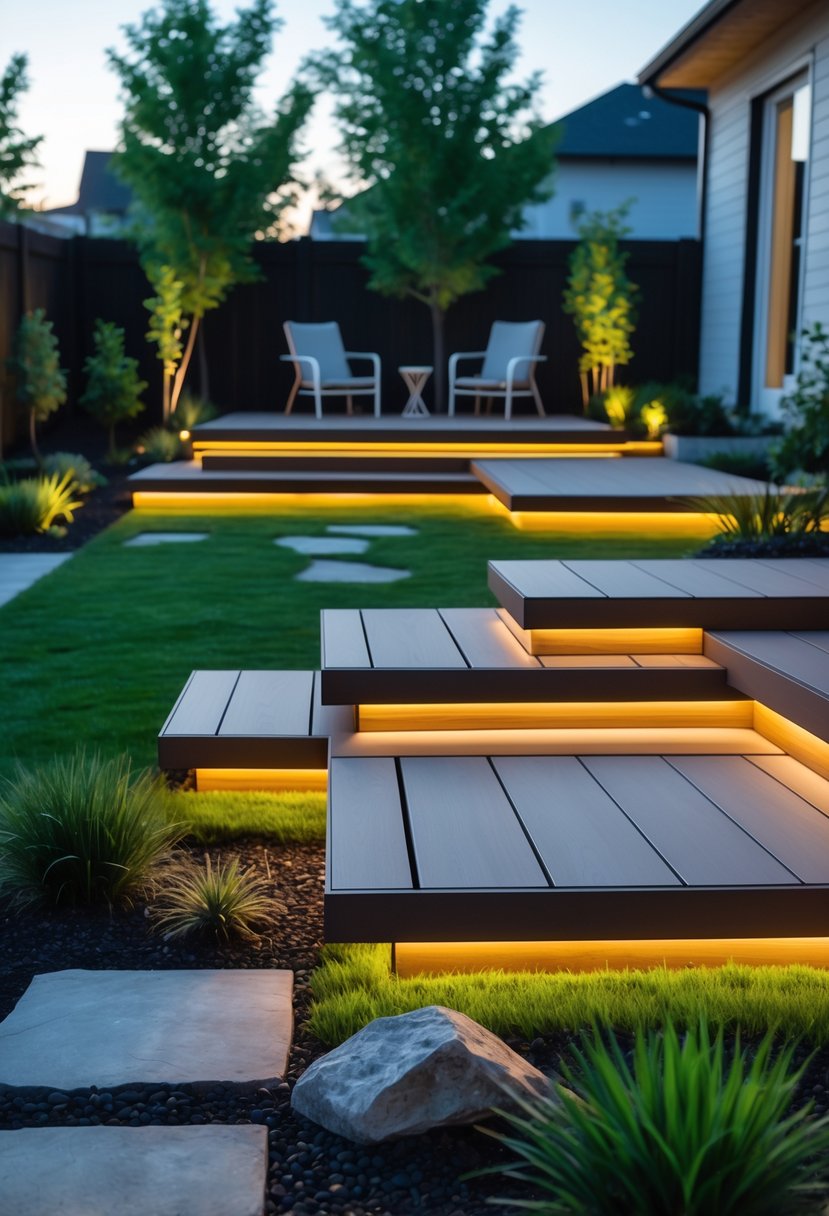
Floating decks create a modern look by sitting just above the ground. They can be placed anywhere in the yard without needing footings.
Adding soft lighting under or around the deck improves safety and sets a calm mood for evening use.
LED lights are a common choice because they use little power and last a long time. This combination makes outdoor spaces more inviting and functional.
2) Native plant beds for low-maintenance landscaping
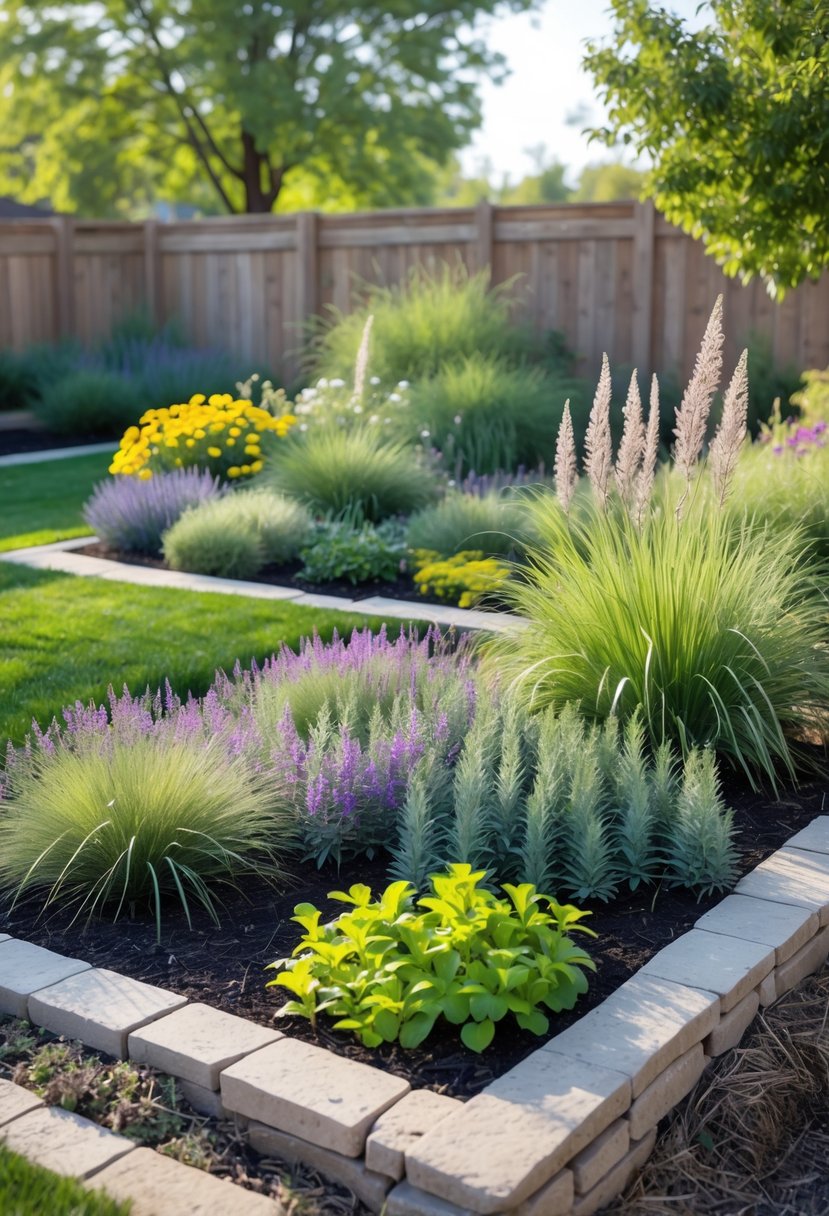
Native plant beds use plants that naturally grow in the local area. These plants are adapted to the climate and soil, so they need less water and care than non-native species.
They help reduce maintenance time because they usually resist pests and diseases better. Using native plants also supports local wildlife by providing natural food and shelter.
This approach creates healthy, sustainable gardens that stay attractive with minimal effort. It is ideal for people who want a vibrant yard without frequent upkeep.
3) Built-in seating under slatted pergolas
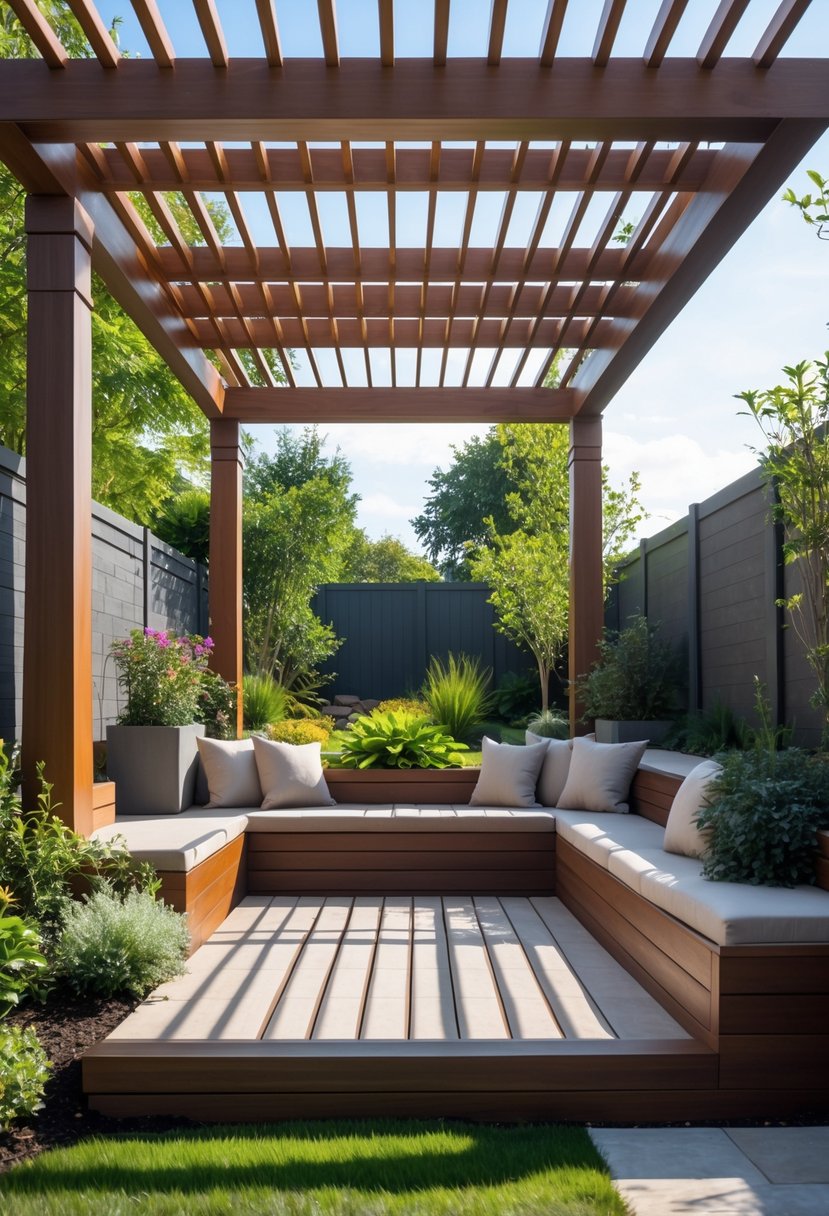
Built-in seating under slatted pergolas helps maximize outdoor space. It offers a practical way to create comfortable spots for sitting while keeping the area organized.
The slats provide partial shade without blocking airflow. This keeps the space cool and bright.
Adding storage under the benches can hold pillows or garden tools. It makes the pergola both functional and neat for gatherings or quiet moments.
4) Gravel fire pit zones with modern seating
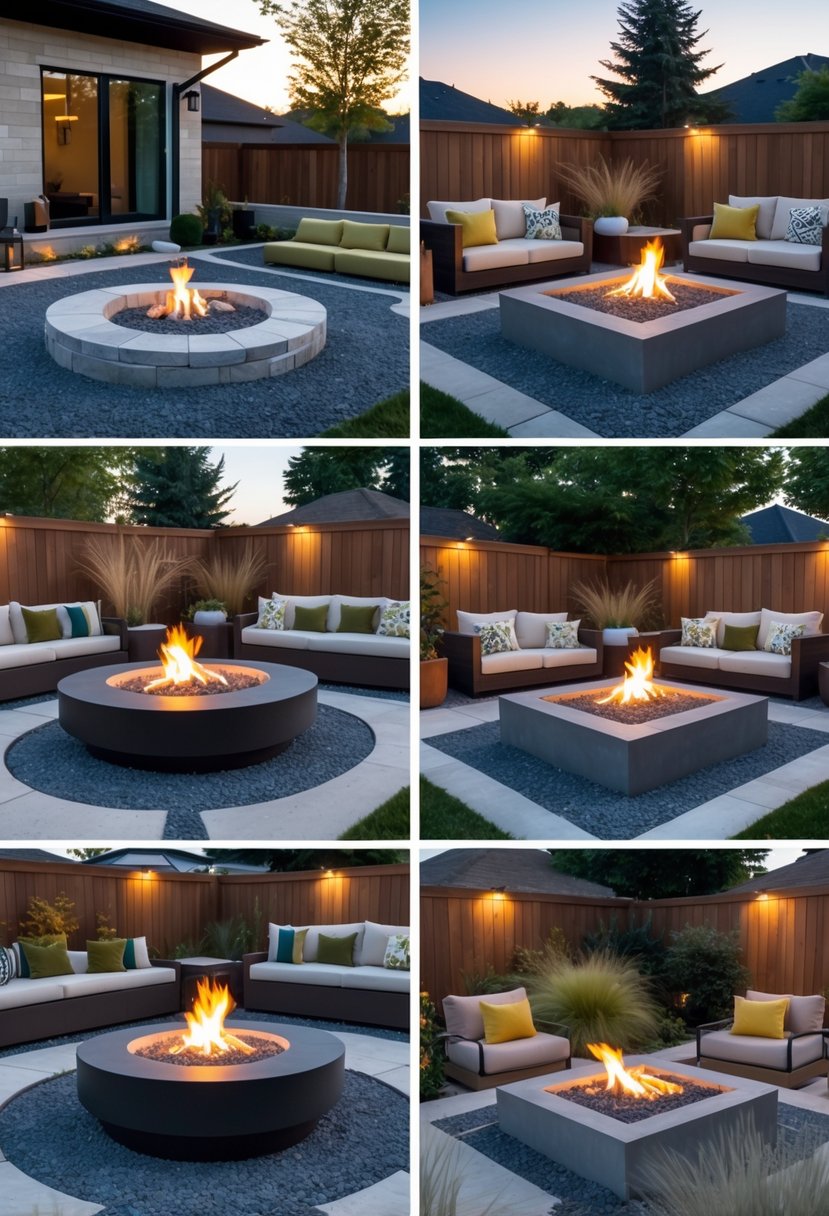
Gravel fire pit areas offer a clean, low-maintenance base that fits many backyard styles. The loose gravel helps with drainage and creates a textured look.
Modern seating such as sleek benches or woven rattan chairs can surround the fire pit for comfort. These choices provide a stylish, relaxed space for gatherings.
Adding drought-resistant plants nearby keeps the area easy to care for while enhancing the modern feel. This setup balances practical design with a cozy atmosphere.
5) Curated pathways using natural stone or gravel

Curated pathways made with natural stone or gravel add both function and style to a backyard. They guide movement through the space and create clear routes between areas.
Natural stone offers a timeless look and can include flagstone or smaller pavers. Gravel paths provide a more casual, low-maintenance option.
Mixing materials like stepping stones with gravel or grass can add texture and visual interest. These pathways help define garden spaces while blending well with natural surroundings.
6) Outdoor kitchens for functional entertaining
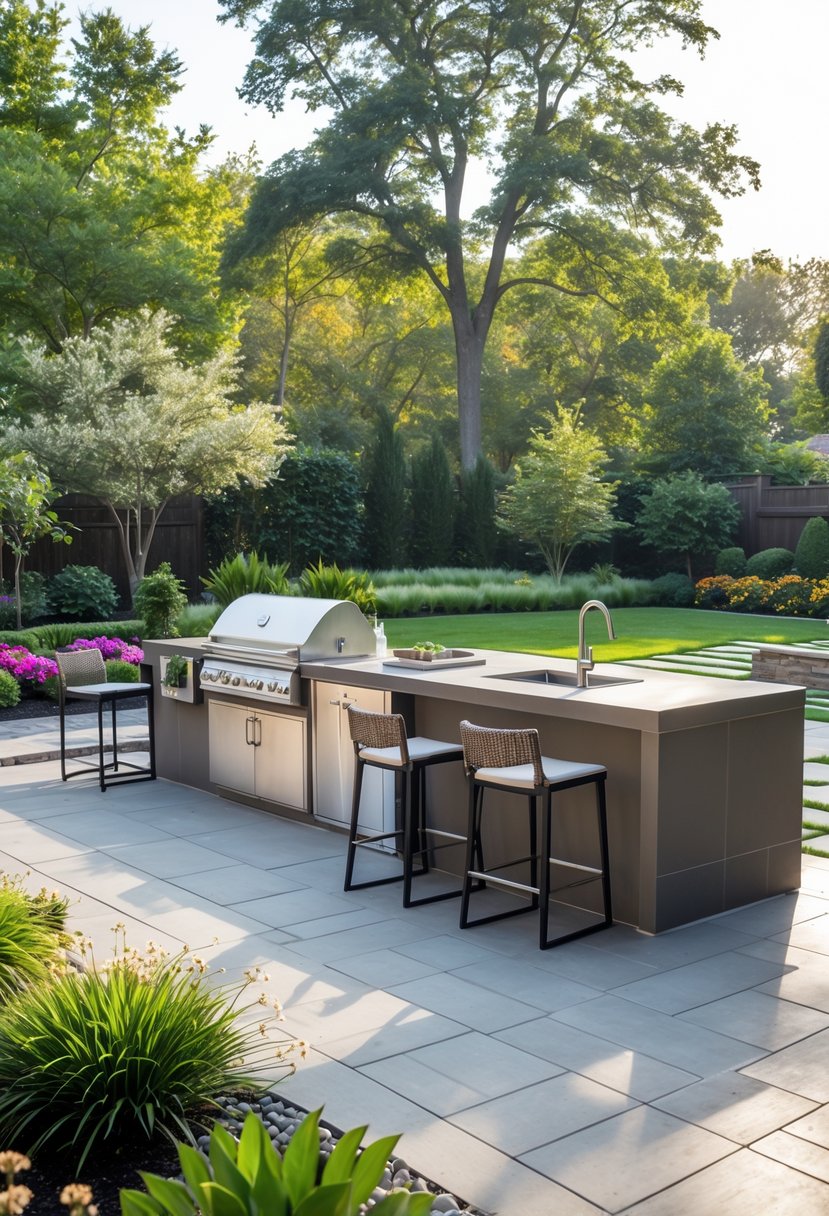
Outdoor kitchens offer a practical way to cook and serve food while socializing outside. They create a central spot for gatherings, making it easier to entertain guests.
These kitchens can include grills, sinks, and counter space for food prep. Designs range from simple setups to fully equipped areas that fit any backyard style.
Adding an outdoor kitchen can also increase home value and improve the overall backyard experience. It helps blend cooking with relaxing and dining outdoors.
7) Water features like small ponds or fountains
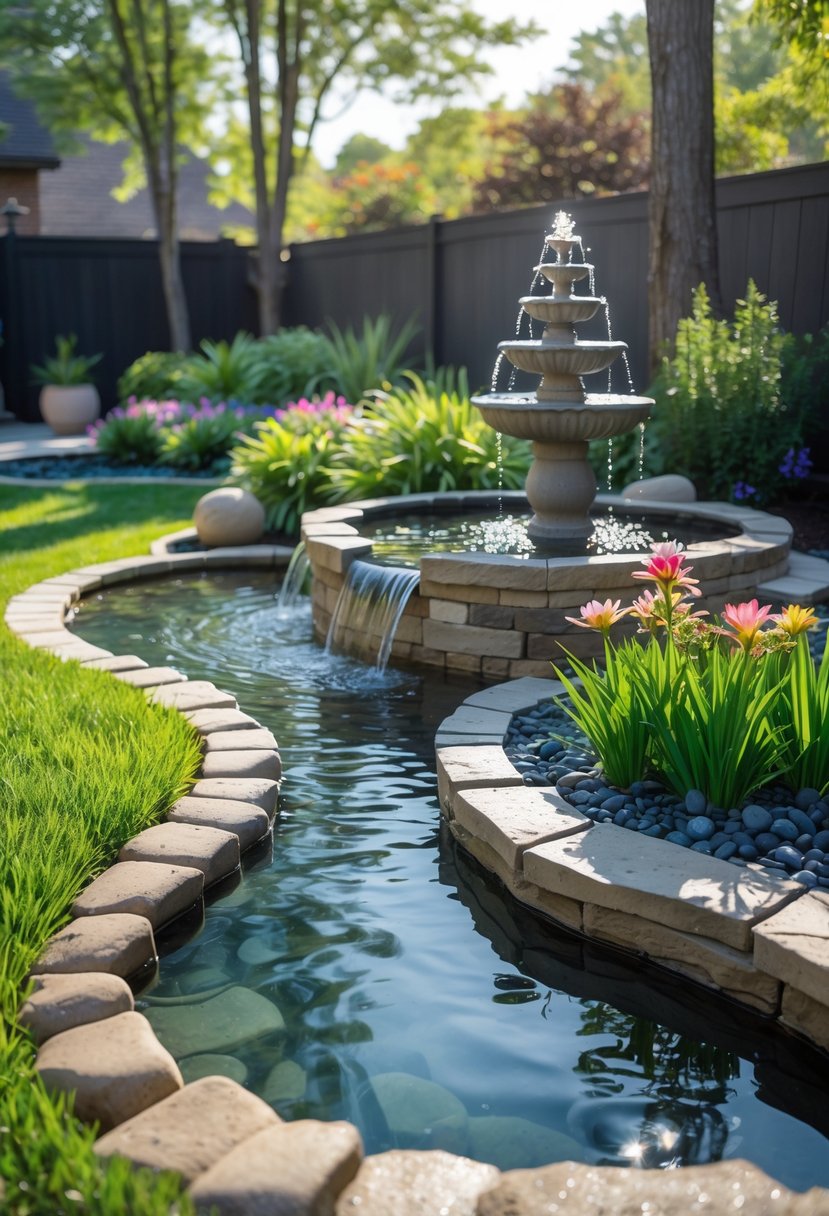
Water features add a calm, peaceful feeling to a backyard. Small ponds or fountains create soft sounds that help mask noise from outside.
They attract birds and other wildlife, adding natural movement and life to the space.
Small ponds with waterfalls or simple fountains fit well in many yard styles. They often require little space and can be easy to maintain.
Fundamentals of Backyard Landscaping
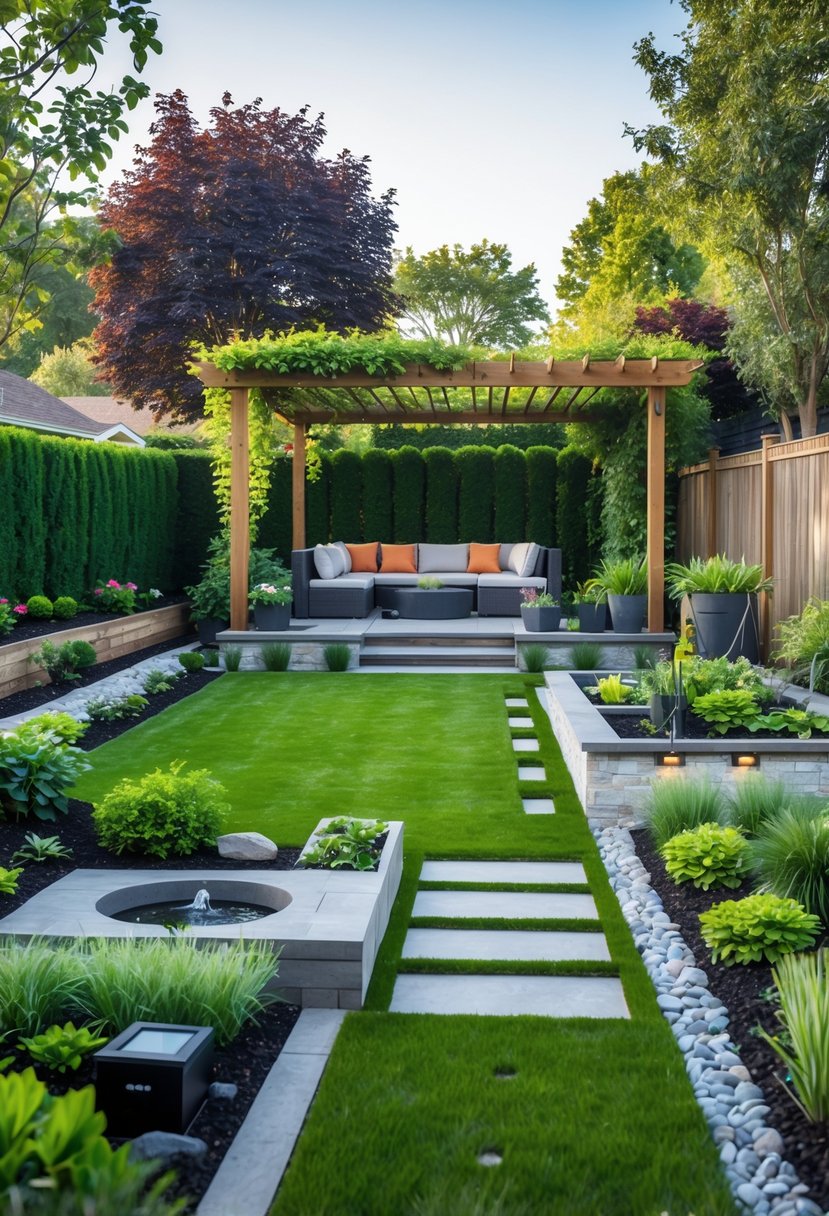
Effective backyard landscaping balances style, function, and cost. It considers space design, environmental impact, and budgeting to create a practical and attractive outdoor area. Each of these factors plays a key role in planning and executing a successful project.
Design Principles
Good backyard design starts with a clear layout. Paths, seating areas, and plant beds should be positioned for easy access and flow. Symmetry and balance guide the eye and create harmony in the space.
Using layers in planting—tall trees at the back, shorter shrubs in front—adds depth. Repetition of colors or shapes unifies the look. Incorporating hardscape elements like decks or patios offers structure and low-maintenance zones.
Lighting is vital for use after dark. Soft lights along walkways and around seating areas improve safety and ambiance. Choosing durable materials ensures longevity and cuts down on future repairs.
Environmental Considerations
Landscaping choices affect water use, soil health, and wildlife habitats. Native plants require less water and are more resistant to pests. They support local birds and pollinators, helping the ecosystem.
Proper drainage prevents water pooling and erosion. Sloping the land or installing drainage systems directs rainwater away from foundations and walkways. Mulch conserves soil moisture and keeps weeds down.
Using organic fertilizers and avoiding harsh chemicals protect the soil and groundwater. Sustainable design can include rain gardens or permeable pavements to manage runoff responsibly.
Budget Planning
Setting a realistic budget early helps avoid overspending. Costs include plants, materials, labor, and ongoing maintenance. Breaking the project into phases allows gradual upgrades without a large initial investment.
Prioritizing key features—like seating or a fire pit—ensures money goes toward areas used most. DIY work on planting or building simple structures can cut costs. However, hiring professionals for complex tasks like drainage or electrical work improves safety and quality.
Recording all expenses and comparing with estimates helps keep the project on track. Planning for unexpected costs avoids delays and compromises.
Maintaining Your New Landscape
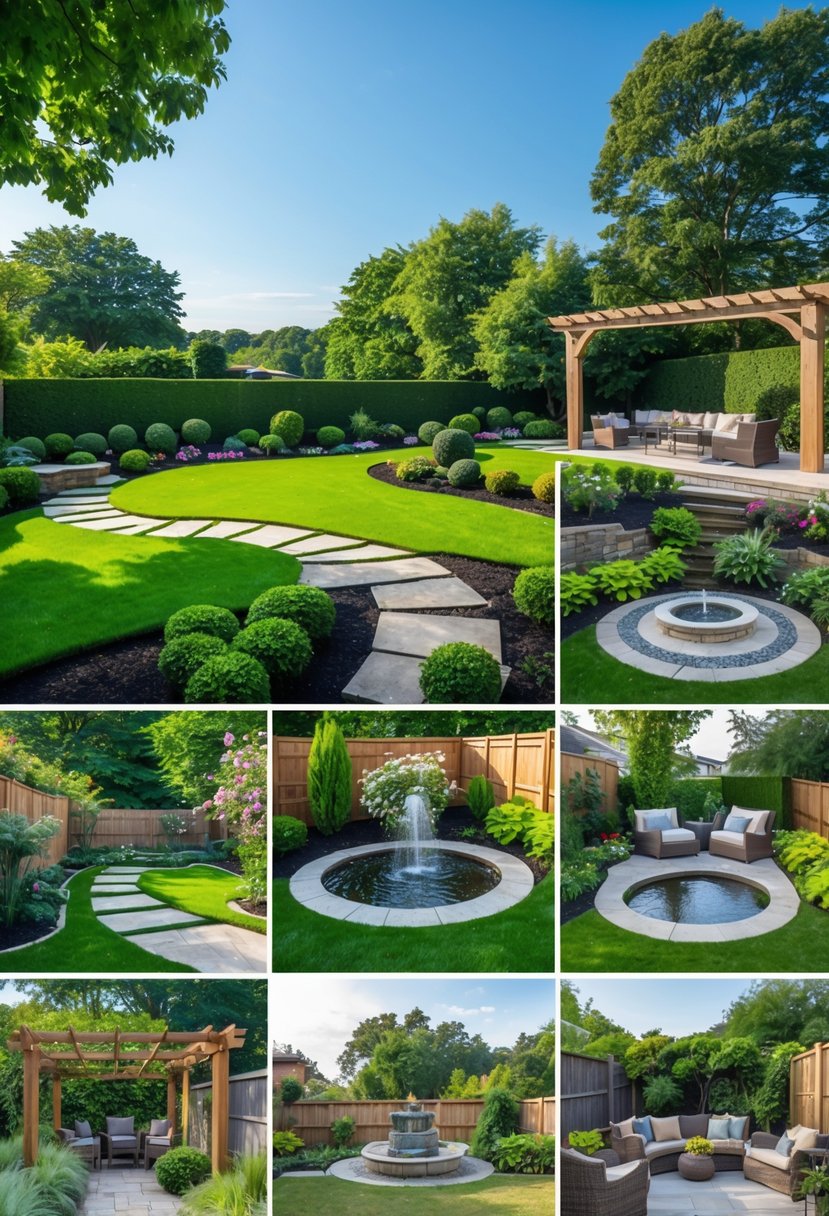
Proper care keeps a landscape healthy and attractive year-round. Understanding when to adjust maintenance routines and managing water use efficiently helps reduce work and save resources.
Seasonal Care Strategies
Different seasons require specific tasks to support plant health and soil quality. In spring, pruning dead branches and adding mulch helps protect roots and retain moisture. Summer calls for checking plants regularly for pests and diseases and trimming as needed to prevent overgrowth.
Fall is a good time to clear leaves, aerate soil, and fertilize to prepare plants for winter. Winter care may include protecting sensitive plants with covers or moving potted plants indoors. Adjusting these tasks based on the type of plants and local climate will improve landscape durability.
Watering and Irrigation Tips
Watering should match plant types and weather conditions. Early morning watering reduces evaporation and helps prevent disease. Drip irrigation systems or soaker hoses deliver water directly to roots, using less water than sprinklers.
Avoid overwatering by checking soil moisture before watering again. Group plants with similar water needs together to make irrigation more efficient. Using rain barrels and mulching around plants can also help maintain soil moisture and reduce the frequency of watering.
Frequently Asked Questions
This section covers specific plants that thrive in zone 9, cost-effective ways to improve outdoor spaces, and key design ideas for front yards in mild climates. These answers help guide choices for lasting and practical backyard landscapes.
What are low-maintenance shrubs suitable for backyard landscaping in zone 9?
Low-maintenance shrubs for zone 9 include yaupon holly, rosemary, and oleander. These plants tolerate heat and occasional drought well.
They require minimal watering once established and provide year-round structure. Choosing native or drought-resistant shrubs reduces upkeep.
Can you suggest some budget-friendly backyard landscaping ideas?
Using natural stone pathways and gravel fire pit zones keeps costs down while adding style. Installing native plant beds lowers water and care needs.
DIY elements like floating decks with soft lighting and built-in seating under pergolas provide function and ambiance without expensive materials.
What landscaping design principles should be considered for a zone 9 front yard?
Focus on plants that handle warm winters and hot summers, like drought-resistant shrubs. Group plants by water needs to conserve resources.
Incorporate hardscapes like stone or gravel paths to define spaces. Built-in seating and shaded areas enhance comfort and curb appeal.

